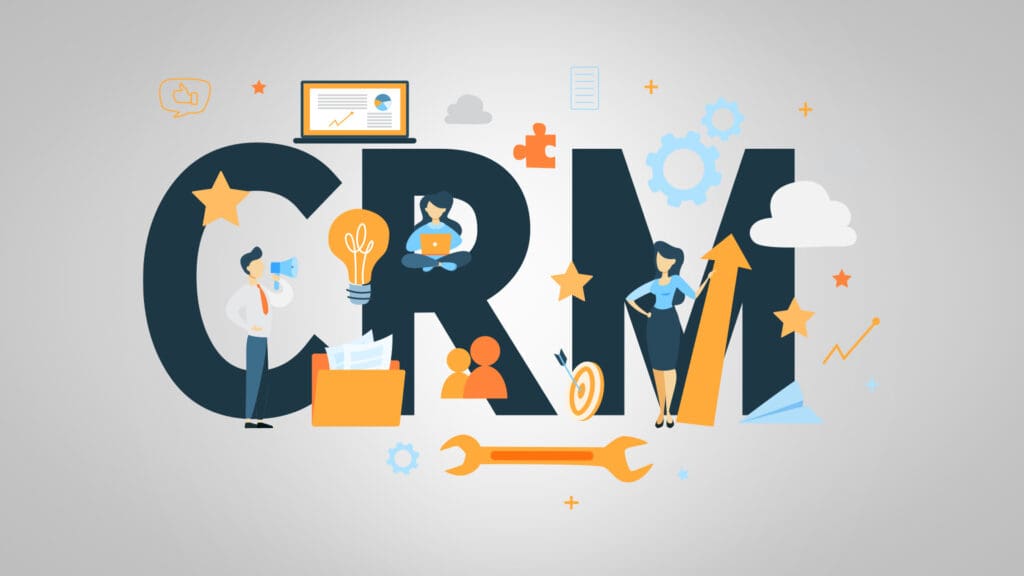
The Customer Journey Analysis and Lessons From the Links
When I was a kid, my near-scratch golfer dad spent a lot of time trying to teach me his passion. There were many steps to approaching the ball and corrective instructions for most practice swings, but when it came to the actual swing, there were only two things I was told to do: “Keep your head down and follow through.”
Well, to my dad’s dismay, I never made the PGA (golf was never really my thing). As an adult, I don’t frequently play golf, and I seldom break 90 when I do. Those golf lessons did, however, teach me something valuable that I apply every day. I learned the importance of following through (although I still struggle to keep my head down).
Follow-Through on Marketing Practices: The Biggest Challenge
When we consult with our clients and evaluate their lead generation and other marketing practices, we often find that follow-through is their biggest challenge. Much like a great golfer takes a video of their swing and self-evaluates to improve their game, a company needs to frequently take an honest look at its marketing practices—the whole customer journey—and assess if the follow-through is lacking.
Just the way 13-year-old me mistakenly thought I had a good golf swing, many organizations assume their marketing operations are tighter than they actually are. It’s time to take an honest look at your sales process and customer experience.
In this edition of Plain Talk, we’ll give you a step-by-step guide to performing a customer journey analysis for your business.
- Why Fear of Failure Prevents Improvement
- How to Perform a Customer Journey Analysis
- 1. Go in with fresh eyes
- 2. Have the serenity to accept the things you cannot change
- 3. Analyze changing customer needs when the economy is outperforming your category
- 4. Focus the scope
- 5. Become the customer(s)
- 6. Form your hypothesis
- 7. Define your process
- 8. Measure and record each touchpoint
- 9. Repeat the parts that make you say, “Huh?”
- 10. Find consensus
- 11. Layer in the data
- 12. Be honest but realistic
- 13. Deliver a tight executive summary
- Get Expert Help With Your Customer Journey Analysis
Why Fear of Failure Prevents Improvement
Businesses are often reluctant to participate in a customer journey analysis. Why? According to an article in the Harvard Business Review, failure can trigger a torrent of painful emotions: hurt, anger, shame, and even depression. As a result, most of us try to avoid mistakes. However, when they do happen, we try to sweep them under the rug. This natural tendency is heightened in companies whose leaders have, often unconsciously, institutionalized a fear of failure.
This means that for companies to improve and succeed, you have to first look at audits for what they really are. To agree to an audit is to acknowledge the obvious: that none of us are perfect and that there is always room for improvement. By their very nature, audits seek these opportunities for improvement. If your organization or an individual in your organization is shame/blame-focused, the tendency will be to explain, attack, externalize, or ignore these opportunities rather than correct them and improve.
Going back to 13-year-old me, I can say with absolute certainty that I’m not a better golfer today because I refused to listen to my dad. His advice was solid. It came from a good place, but I viewed it as criticism. I hit my ball away from his. I stopped taking practice swings, and I shut down to any suggestions. Then I made excuses. In fact, I even blamed him when I didn’t play well. These defense mechanisms are reflected in businesses that have not overcome blame culture every day, and as much as we don’t want to admit it, we’ve all done it at least once.
A sales funnel scenario
Senior management questions why sales are down. It’s unreasonable to think they wouldn’t notice, yet often the instinct is for the funnel operators (i.e., sales) to look straight past activity in the funnel itself and immediately go from the narrowed bottom directly to the top.
“There aren’t enough leads,” or, “The leads aren’t as good of quality as they use to be.” While these assertions are often true, they rarely represent the whole picture. The top of your funnel and the bottom of your funnel don’t exist in different universes. Your sales funnel isn’t a black hole. Light escapes from your sales process and customer experiences, and affects both the leads coming into your funnel and the sales coming out of it.
How to Perform a Customer Journey Analysis
If you are one of those organizations that’s ready to take an honest look at your customer’s journey and touchpoints to find those nuggets that will help you succeed, there’s a pretty straightforward approach you can use and apply to your specific vertical.
1. Go in with fresh eyes
Before you start, your team needs to be able to (and feel empowered to) commit to seeking and finding improvement regardless of any sacred cows, office politics, habits, history, heritage or whatever else. This is a “customer first” commitment. But let’s face it, true objectivity, and well, courage, can be hard to come by. If you can’t commit to at least identifying opportunities for improvement (you won’t win every battle) then you need to look outside of your organization for an audit.
2. Have the serenity to accept the things you cannot change
This is a powerful and important idea we’re paraphrasing. You can’t change the economy. Is the economy down? If the economy is down and you sell a fairly elastic, cyclical product or service, then sales might be down, and the economy is a factor. But even if the economy is down, you still need to look at your product/service against your category and the current climate to seek opportunities for improvement. Focusing on the things you cannot change as reasons for failure will be a self-fulfilling prophesy. Rather, redirect your efforts to factors that you can impact. 2020 saw hundreds of examples of this like retailers who were normally brick-and-mortar dependent refocusing on e-commerce.
3. Analyze changing customer needs when the economy is outperforming your category
Categories are just made-up things like the Dewey Decimal System. Categorizing helps us understand and manage information for comparison. So, if your category is down, it is mission-critical to understand your customer. It is unlikely your customers’ needs have changed. They have either reprioritized those needs or just found a different way of meeting those needs outside of your category definitions. Maybe they stopped eating ice cream because frozen yogurt became trendy (Fun fact: that actually happened in the 80s).
4. Focus the scope
Now that you’ve analyzed the economy and category against your sales, you need to define your competitive set. What are your customers likely doing with the money that they would have otherwise spent with you? Defining the competitive set will determine who you mystery shop. You want the results to be meaningful. If you shop for too many competitors, the comparisons can become overwhelming and meaningless. If you leave a major competitor out of your comparison, your results can be equally meaningless, as that major competitor may be eating your lunch without you even being aware! Per steps one through four, not every competitor has to be in your category, but in most cases, they will be.
5. Become the customer(s)
Assume the role of the customer. According to Deloitte, why do companies sometimes struggle when it comes to CX transformation? Often, it’s because they are channel-aligned—and hence, seeking an omnichannel solution—rather than customer-aligned, seeking a seamless experience for the customer. This is why we recommend starting with a customer-centric approach.
- Anyone: If the sales process is online, you can assume the role of anyone in the sales process.
- Target market: If the target market is senior citizens, for example, you can pretend to be a 75-year-old man named Jasper.
- Personas: If your company uses personas, your shoppers can assume the identities of your personas.
If your sales process is in person, then you might need to look for outside help. For example, a high-end car company eight years ago was concerned about how their mostly male sales force treated young women car buyers. Working with a third-party company, they hired women in their early 30s and armed them with fake business cards, fancy clothes and stylish video-recording glasses to mystery shop/test-drive vehicles. The results ultimately changed the way the company trained and now hires its sales force. The car company could never have pulled this exercise off internally.
6. Form your hypothesis
Read reviews. The internet is likely packed full of reviews of you and every competitor you’ve never heard of, so you’re going to have to define a process. The cornucopia of perspectives provided by reviews will help you see the whole field and ensure you’re measuring everything that needs to be measured.
7. Define your customer journey analysis process
Your results will only be meaningful if you take your company and each competitor through the same process. That being said, don’t be too rigid to learn. If a competitor’s salesperson is taking you through a quicker, more agreeable sales process, let them! This might be the point of differentiation. With a consumer packaged goods (CPG) product, this may be a non-traditional point of sale in your category that one of your competitors has discovered. Also, remember, don’t just scrutinize marketing and sales; audit customer service, too!
8. Measure and record each touchpoint
Use this checklist for step 7. All of these touchpoints can be analyzed, and they are critical—especially in a winner-take-all process like selecting a bank loan or a 16-ounce soda sale.
- Did you submit an online request?
- How did they respond?
- How quickly did they respond?
- Who responded?
- How many times did they respond?
- What shelf was your product on?
- Was the display setup right?
- Were there sufficient inventories?
- Did you call your customer service?
- Did you want to strangle the computer system that answered the phone?
- How many buttons did you have to press?
- Did you ever end up with the right person?
- Was customer service empowered to help, or were they just there to apologize and get yelled at?
- Which competitor was notably best? Bring a stopwatch!
9. Repeat the parts that make you say, “Huh?”
While mystery shopping is important, it delivers a low sample size. Maybe you just contacted your company on a bad day, you got your worst salesperson on his worst day. Or, maybe you got your competitor’s best salesperson on her best day as well. The touchpoints that stand out should be repeatable and sustainable. If your company takes twice as long as your competitors to respond to an online submission, test it three or four more times. Depending on a single experience isn’t enough to make a blanket judgment.
10. Find consensus
Design and perform primary research on your customers and your competitors’ customers based on your mystery shopping experience. Ask them about their shopping experience. Why did you select us? Who else did you consider? How did you find us? This of course is very different based on the product/service you’re selling.
11. Layer in the data
Depending on how large your organization is and what you sell, you have data – maybe lots of data from your customer relationship management (CRM) software, Google Analytics and countless other systems used by marketing, sales and customer service. This data should support your findings from steps eight, nine and 10. If you had a hard time navigating your website to make a purchase and customers told you the same thing, your website analytics should support this conclusion.
We don’t recommend looking at this data until this point because the audit follows an outside-in approach. Also, you likely only have this deep level of data on your own company. Reviewed without a comparative context, you can easily focus on pain points that may not matter. Often, we’ll use a website monitoring tool here if a page is bottlenecking and track consumers’ mouse movements during their user sessions.
This is also the time to layer in data from review sites. The meaningful reviews will likely coincide with your research.
12. Be honest but realistic
You probably don’t work for a start-up company, and the larger your company is, the more ingrained expensive legacy systems likely are. If your company ever bought another company or merged, that adds another whole layer of complexities. The only way to champion improvement is to be an adult. Perfect isn’t possible, and sometimes the results of this process are only marginal improvements.
13. Deliver a tight executive summary
Just because you or a consultant have done a 150-page review of your sales process and identified places for improvement doesn’t mean anything will change. You need senior management to read, accept and champion your research. The problem is they are busy and have dozens of others competing for their time. Your executive summary earns the right for the nitty-gritties of your research to be reviewed and considered. Keep it brief and bold. Remember, executive summaries are sales documents that senior executives peruse to gatekeep their time. Good research with a bad executive summary dies an almost certain death in a filing cabinet.
Get Expert Help With Your Customer Journey Analysis
If you are one of the brave souls who will now embark on the challenge of a customer journey analysis, we wish you the best of luck in uncovering those nuggets of awesomeness this process will help you find. If you still have questions about auditing your whole customer journey or need a hand, give us a call at 502-499-4209. You can also drop us a note here, and we’ll get right back with you.
Our Articles Delivered
Signup to receive our latest articles right in your inbox.




